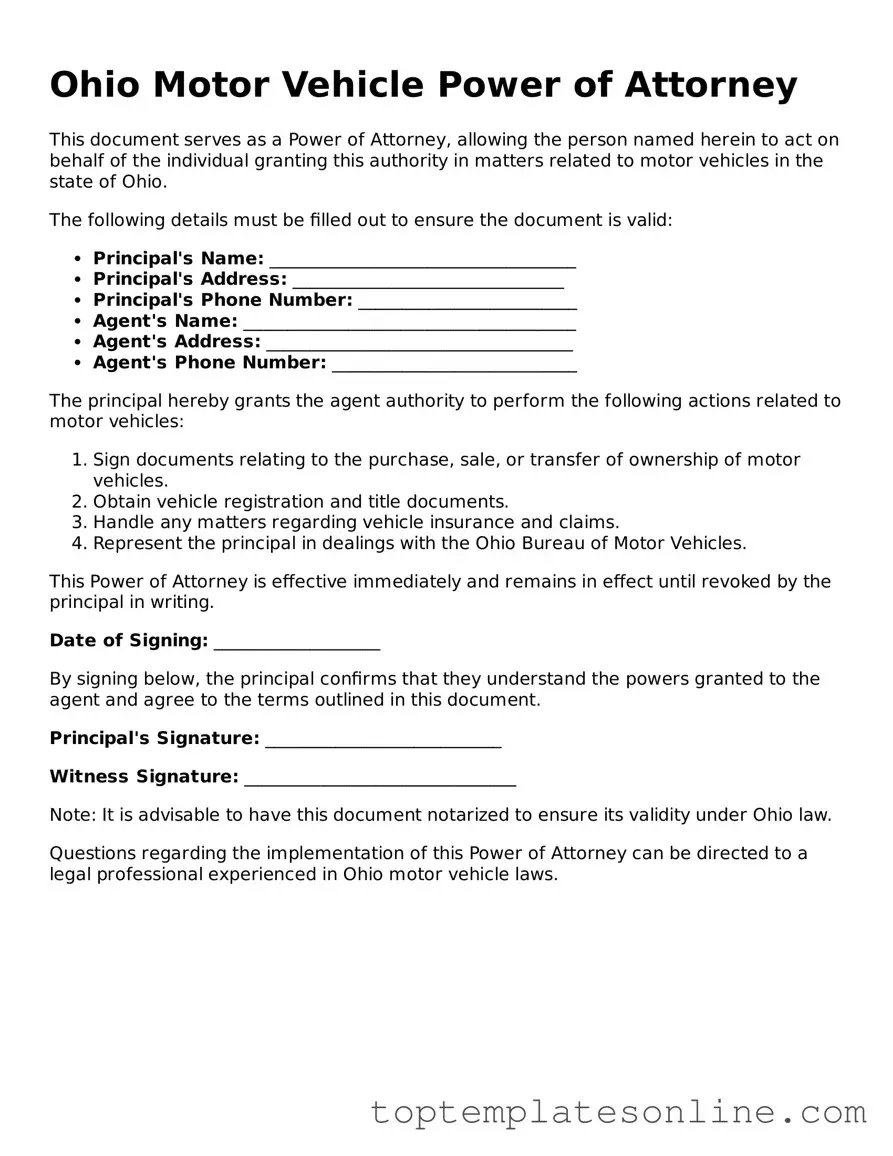Blank Motor Vehicle Power of Attorney Template for Ohio State
The Ohio Motor Vehicle Power of Attorney form is a legal document that allows an individual to designate another person to act on their behalf regarding motor vehicle transactions. This can include tasks such as registering a vehicle, transferring ownership, or handling title issues. Understanding this form is essential for anyone looking to simplify their vehicle-related responsibilities in Ohio.
Customize Motor Vehicle Power of Attorney Here
